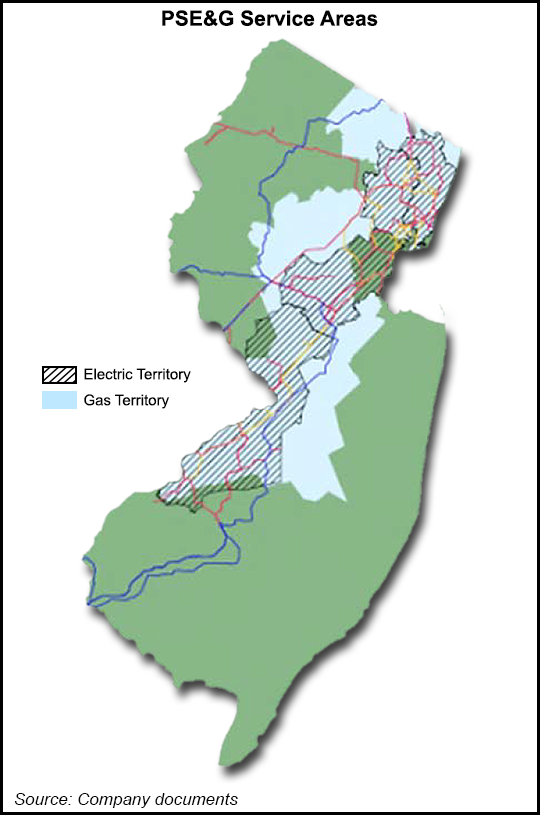Regulatory | Infrastructure | NGI All News Access
New Jersey Regulators OK Scaled-Back PSE&G Pipe Replacement
New Jersey’s largest utility, Public Service Electric and Gas Co. (PSE&G), and state regulators reached an initial settlement to allow replacement of aging natural gas mains and service lines.

The three-year program has a cost of $905 million and is to be submitted to the New Jersey Board of Public Utilities (BPU) for approval. The initial settlement is with BPU staff and the New Jersey Division of Rate Counsel.
PSE&G had sought approval to invest $1.6 billion during five years to accelerate the replacement of 800 miles of cast iron and unprotected steel gas mains, and 55,000 unprotected steel service lines to homes and businesses. The settlement will enable the utility to replace up to 510 miles of gas mains and 38,000 service lines over the three-year period.
“Although the agreement calls for a three-year program, we will have the ability to make a similar level of annual investment,” said PSE&G CEO Ralph LaRossa.
The mains and service lines will be replaced with plastic piping, which less likely to have leaks. New elevated pressure systems will enable the installation of excess flow valves that automatically shut off gas flow if a service line is damaged. These also better support the use of high-efficiency appliances.
Customers are to see no rate increase at the onset of the program. In 2017, the typical residential gas heating customer who uses 1,010 therms annually is expected to see an increase of 49 cents on their average monthly bill. At the end of the Gas System Modernization Program, the same residential customer is projected to see a total cumulative increase of $4.82 on their average monthly bill, or an increase of approximately 1.5% annually over four years, PSE&G said.
The utility serves 1.8 million natural gas customers.
Under the agreement, PSE&G will earn a return on equity of 9.75% on $650 million of investment based on an accelerated recovery mechanism, and it will seek to recover the remaining $255 million in a base rate case, to be filed by Nov. 1, 2017.
A separate program approved by regulators last year, the $1.22 billion Energy Strong program, includes raising, relocating and protecting electrical switching and substations, and replacing 250 miles of low-pressure cast iron gas mains in or near flood areas.
© 2024 Natural Gas Intelligence. All rights reserved.
ISSN © 1532-1231 | ISSN © 2577-9877 |
